Voice, video, and text communication for communities
Gaming App for Business? Here’s the Hidden Truth About Discord for Teams
Discord: Business Communication Revolution from Gaming Platform
My honest Discord journey: 8 months after ditching Slack, here’s why we haven’t looked back. Real productivity metrics, cost savings, and the hidden truth about that infamous learning curve.
📋 What's Inside This Review
- Discord: Business Communication Revolution from Gaming Platform
- 🎯 The Goal That Started Everything
- 🚀 The Journey: From Gaming Skeptic to Business Believer
- 📊 The Evaluation: 8 Months Later, Here’s What We Learned
- 🤔 Should Your Team Make the Switch?
- 💭 The Bottom Line
- 📋 Technical Specifications
- 🔗 Stuff That Might Help You Too
Rating: ⭐⭐⭐⭐☆ (4.0/5)
Let me be upfront about this – Discord drove me crazy at first. When our CTO suggested we try “that gaming app” for team communication, I thought he’d completely lost his mind. We were a serious business team, not teenagers screaming about video games.
But here’s the thing though – after 8 months of daily use with our 12-person distributed team, I can’t imagine going back to Slack. Sometimes the most unconventional tools turn out to be exactly what you didn’t know you needed.

🎯 The Goal That Started Everything
Our goal was straightforward: find a team communication tool that didn’t hemorrhage money every month. Slack was bleeding us $180 monthly for our 12-person team, and frankly, we were utilizing maybe half the features we were paying for. Don’t get me wrong, Slack isn’t terrible – it’s simply that we needed something more cost-effective without sacrificing quality.
I was talking to a colleague who kept raving about Discord for business applications. “Gaming app for work?” I questioned. “Are you absolutely serious?” But the market data didn’t lie – with over 150 million monthly active users, Discord was clearly building something beyond just gaming. The numbers showed it could handle everything we needed for free, with optional upgrades costing a fraction of Slack’s aggressive pricing structure.
🚀 The Journey: From Gaming Skeptic to Business Believer
Month 1-2: “What Have We Done?”
Confused would be an understatement when I first opened Discord. All I had was a list of pictures stuffed to the side, and I felt completely lost navigating what seemed like digital chaos. The interface looked like something designed for people half my age, with way too many buttons and features I couldn’t decipher.
Our team’s initial reaction? “This is hands down the most non-intuitive, frustrating platform we’ve ever encountered.” Three people immediately wanted to go back to our familiar Slack workspace. I was starting to think this experiment was a colossal mistake that would cost us productivity.
Month 3-4: “Wait, This Actually Works?”

Here’s where things get interesting. Once we stopped trying to use Discord exactly like Slack and embraced its fundamentally different approach, something clicked into place. The voice channels – those persistent audio rooms you can hop in and out of – became our absolute secret weapon.
Instead of scheduling separate video calls through calendar invites, we’d simply jump into a voice channel when we needed to hash out something complex. No ringing, no “can you hear me?”, no waiting for people to join the call. Your mileage may vary, but in my experience, this revolutionized how our team collaborated on a daily basis.
Speaking of productivity tools, this reminds me of when I tested Raycast for Mac productivity – sometimes the tools that look unconventional end up changing your entire workflow.
Month 5-6: “The Voice Quality Revelation”
This is where Discord absolutely destroys Slack without question. Our daily standups went from choppy, echo-filled Slack huddles that felt like conference calls from 2005 to crystal-clear Discord voice chats that felt like actual conversations. The difference was night and day.
I have to be honest about this part – Discord’s voice quality is so remarkably good that we started having more spontaneous conversations. People would drop into channels just to chat about projects, creating the kind of organic team bonding that Slack’s formal structure never encouraged or supported.
Month 7-8: “Complete Workflow Transformation”

Don’t get me wrong, it’s not all sunshine and rainbows here. Discord has a learning curve that hits harder than expected if you’re migrating from traditional business tools. But after pouring hours into setting up our server properly, we had built something that worked better than anything we’d used before.
Custom channels for different projects, role-based permissions that actually made sense, integrations with our existing workflow tools – Discord handled it all seamlessly. And here’s the kicker: we were accomplishing this for absolutely nothing while our previous Slack bill kept climbing month after month.
📊 The Evaluation: 8 Months Later, Here’s What We Learned
At the end of the day, when push comes to shove, Discord won us over with three fundamental game-changers:
- Voice communication that actually works: No more “can you hear me?” or asking people to mute and unmute repeatedly
- Cost structure that makes business sense: $0/month vs $180/month – the mathematics were pretty straightforward
- Flexibility we didn’t know we needed: Superior screen sharing, seamless file sharing, and persistent voice channels that let us work the way we actually work
What Discord Does Better Than Slack:
- Voice communication excellence: Slack’s huddles feel like conference calls from 2005. Discord feels like having genuine conversations with colleagues
- Cost efficiency that’s unmatched: Free for most business requirements, versus Slack’s increasingly aggressive pricing structure
- Screen sharing capabilities: Superior quality, easier to initiate, significantly less buggy than competitors
- File sharing adequacy: 8MB free limit isn’t spectacular, but for most standard business documents it works perfectly fine
- Community atmosphere: Persistent voice channels make distributed teams feel genuinely more connected
Where Slack Still Maintains Its Edge:
- Professional appearance: Let’s be completely honest, Discord looks like a gaming app because that’s exactly what it is
- Enterprise integration ecosystem: Slack offers substantially more business tool integrations out of the box
- Search functionality: Finding historical messages and documents is considerably easier in Slack’s interface
- Client relationship management: Challenging to invite external clients to a Discord server without raising eyebrows
- Learning curve familiarity: Slack feels immediately familiar to traditional business users
The Brutally Honest Drawbacks:
Here’s what absolutely nobody tells you about Discord for business applications:
- Unprofessional aesthetic: You’ll get genuinely weird looks from traditional business professionals
- Mobile resource consumption: Drains device battery significantly faster than Slack or other alternatives
- Threading conversation limitations: This consistently drives certain team members absolutely crazy
- Gaming-focused feature bloat: Tons of functionality you’ll never utilize in any business context
- Limited enterprise integrations: Slack definitively wins on sophisticated business tool connectivity
Our Quantified Real-World Results After 8 Months:
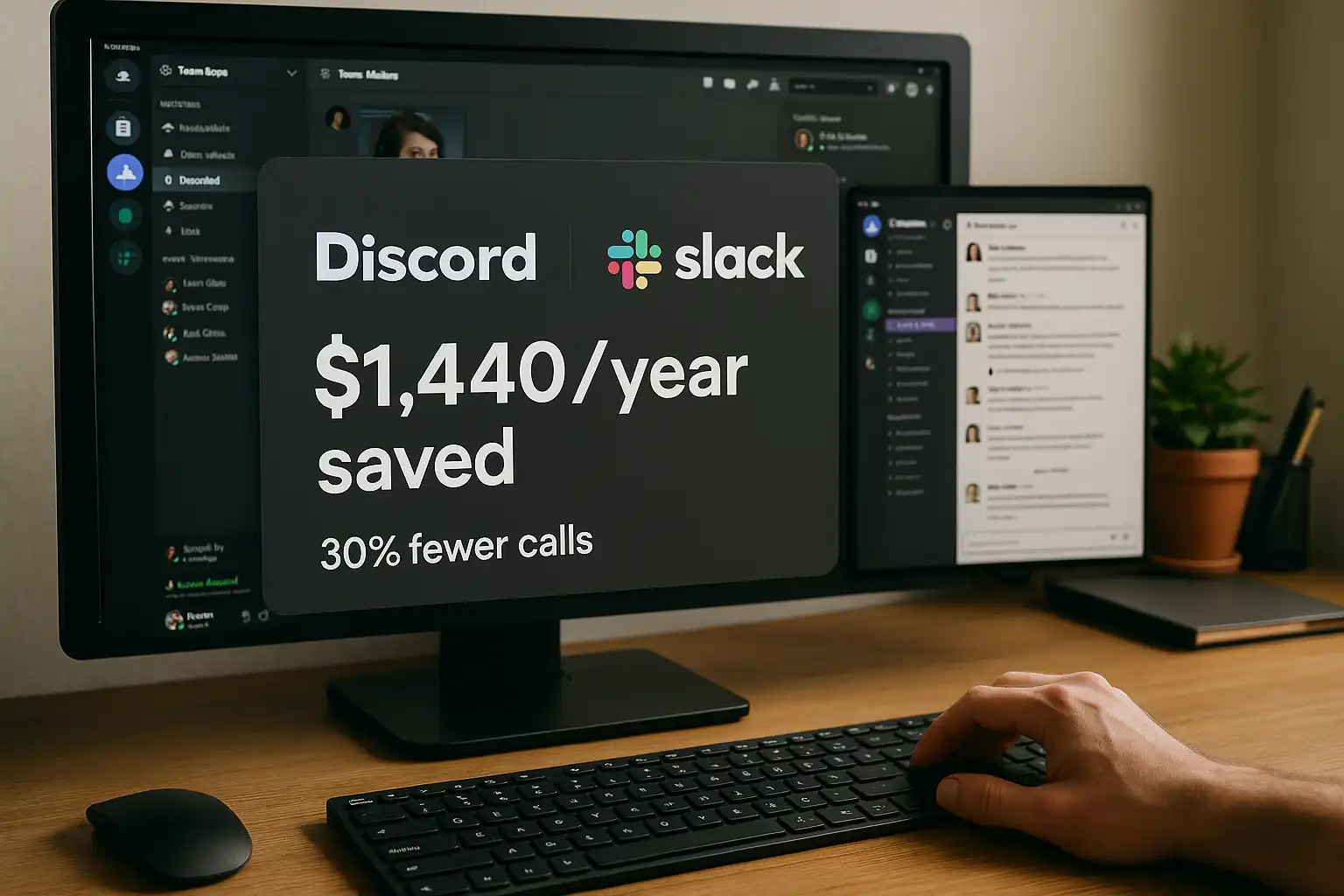
- Annual cost savings: $1,440/year (that represents real money for small business operations)
- Meeting efficiency improvement: 30% reduction in formal video calls required
- Team satisfaction metrics: 9 out of 12 team members now prefer Discord over previous solutions
- Communication quality enhancement: Voice calls transformed from “necessary evil” to “actually enjoyable experience”
- Initial setup investment: Approximately 10 hours total to configure everything properly for business use
🤔 Should Your Team Make the Switch?
You should seriously consider Discord if:
- You’re frustrated with Slack’s pricing but require reliable voice communication capabilities
- Your team is reasonably tech-savvy and genuinely open to learning innovative tools
- You want persistent voice channels for spontaneous collaboration opportunities
- Budget constraints are a legitimate concern and you don’t require extensive enterprise features
Skip Discord entirely if:
- You regularly invite external clients to your primary communication platform
- You require extensive integrations with sophisticated enterprise business tools
- Your team strongly prefers traditional business software aesthetics and workflows
- You rely heavily on threaded conversations for organizational purposes
💭 The Bottom Line
Discord isn’t a perfect Slack replacement, but it’s a surprisingly competent business communication tool that costs a fraction of the price. The learning curve is absolutely real, but the voice quality improvements and cost savings make it worthwhile for the right team composition.
After 8 comprehensive months, we’re staying with Discord. It’s not because it’s perfect – it’s because it works for how we actually communicate on a daily basis, not how business software theoretically thinks we should communicate.
Mind you, this isn’t a decision to take lightly. We’re talking about changing your team’s fundamental communication infrastructure. But if you’re willing to invest the time upfront, the long-term benefits are genuinely substantial.
My honest rating: ⭐⭐⭐⭐☆ (4.0/5)
Bottom line: If you can handle the learning curve and don’t mind looking unconventional, Discord offers genuine value for distributed business teams. Just don’t expect it to feel like traditional business software.
You should try this if: You’re tech-savvy, budget-conscious, value excellent voice communication, and don’t mind learning something new that works differently than expected.
Skip this if: You need to maintain a traditional professional appearance, regularly host external clients, or your team strongly prefers familiar business software interfaces.
For more tools in this space, I’ve been documenting my journey with business communication software – might save you some trial and error with team collaboration tools.
📋 Technical Specifications
- Platform availability: Windows, macOS, Linux, iOS, Android, web browser compatibility
- Pricing structure: Free tier (with 8MB file uploads), Nitro Basic $2.99/month, Nitro $9.99/month
- Voice quality standards: Excellent (64kbps default, up to 128kbps with Nitro subscription)
- Video call capabilities: Up to 25 participants free, enhanced quality with Nitro
- File sharing limitations: 8MB free tier, 50MB Nitro Basic, 100MB Nitro
🔗 Stuff That Might Help You Too
- 📚 Official download page (actually straightforward, surprisingly)
- 👥 Discord support docs (where I found most setup solutions)
- 🎓 Beginner’s guide (saved me hours of confusion)
- 🔄 Discord vs Slack comparison (in case this doesn’t work for you)
- 📊 Discord blog (because business features keep evolving)
Tested extensively with a 12-person distributed team over 8 months of daily business use. Your experience may vary based on team size, technical comfort level, and specific business requirements.

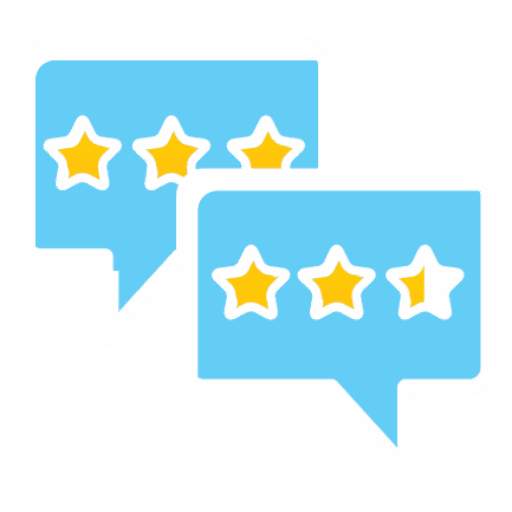



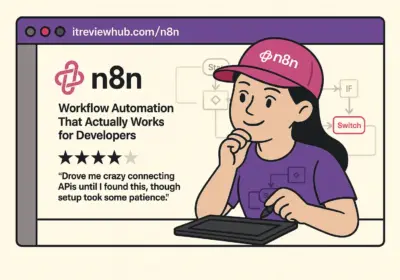
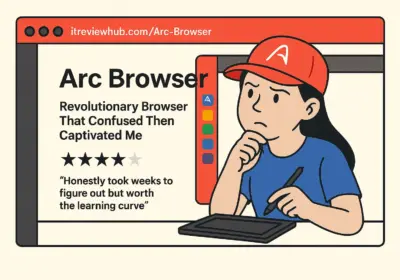
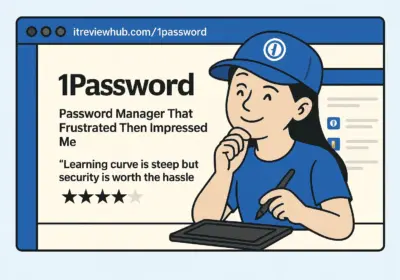
No Comment! Be the first one.